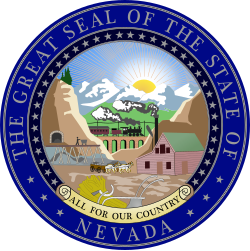Campaign
This campaign was considered one of the most competitive and highly watched in the nation in 1958. Senator Malone was known nationally as a leader within the Republican Party's right wing and held key appointments on the Senate Finance and Interior Committees. [2]
Malone campaigned on his experience and seniority in the Senate, using the slogan "He Knows Nevada Best." He received support from Eisenhower cabinet secretaries Fred Seaton and Ezra Taft Benson. Benson, one of the Twelve Apostles of the Church of Jesus Christ of Latter-Day Saints, was especially influential among Nevada's large Mormon population. His endorsement was seen as particularly important in light of Cannon's Mormon faith. Late in the campaign, Malone published full-page ads touting his effort to save Nevada from a federal gambling tax. [2]
Cannon focused his attacks on Malone's absentee record in the Senate and his reputation on Capitol Hill as an unpopular extremist. [2]



